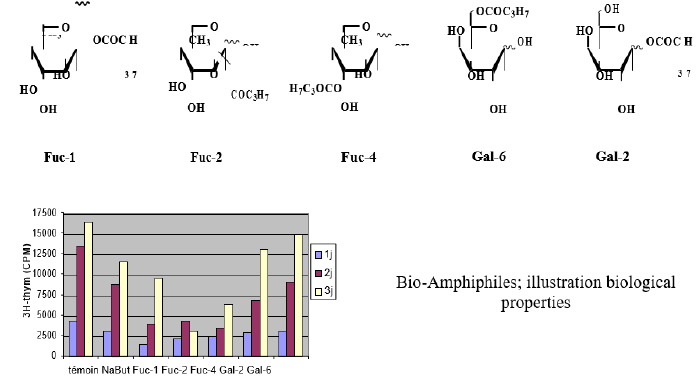Abstract
Keywords: Global warming; Renewable resources; Fossil; Renewable nature; Raw materials; Plant chemistry; Carbohydrate; Amphiphilic; Antitumoral
Mini Review
Four major challenges present themselves to us for this 21st century. First, an increase in the world’s population, leading to an increase in food and energy needs, all coupled with global warming. By 2050, the population is expected to increase by more than 50%, which will imply a demand of more than 70% in food needs and more than 100% in energy. Oil has allowed an explosion in technological and human development, so we need to prepare for after oil. The challenge now is to ensure economic development with renewable resources while limiting the impact on the environment and people. Plant chemistry, the pillar of green chemistry, can answer this. This context has the direct consequence of the development of the use of renewable resources to replace those of fossil origin. This is particularly the case for plant resources, such as plants whose use is motivated by their great abundance, their diversity, their renewable nature and their richness in compounds of interest.
Three major axes are emerging for plant chemistry:
a) The challenge of natural reserves with the widening supply of renewable raw materials for the chemical industries.
b) Integration towards a bio-based economy with the creation of bridges between the different sectors and a balance between economy, environment and social component.
c) Consumer expectations with the improvement of current properties of formations and materials and the improvement of life cycle analysis.
The supply of raw materials is a challenge. We must ensure the secure supply of biomass, the lower cost of renewable raw materials and also the development of supply chains. This requires mobilizing additional areas and biomass, increasing agricultural areas and profitability per hectare, and improving the efficiency of the systems. Plant chemistry uses around 30 million tonnes of crops, or 6 million hectares, which represents less than 0.5% of the total arable land. For example, the bioplastics sector represents around 1 million tonnes worldwide, or 0.1% of all arable land. Within our research unit, we are exploring ways to enhance plants by using fractions (fatty acids, glycones, rhamnolipids, polyphenols, etc.) or biomolecules (chlorogenic acids, specific fatty acids) extracted for industrial or biological applications. These valuations can be by direct use of the extract or after formulation / chemistry in the context of sustainable chemistry.
Among the applications we develop, we can cite the use of
a) Carbohydrate and lipid fractions for obtaining amphiphilic antibacterial, antitumoral compounds. (Figures 1-3).
b) Study the extraction of phenolic compounds, especially chlorogenic acids (CQA), from variety starch potato peel, flesh potato, liquid pulp, lyophilized one and red water from potato processing. Evaluate antioxidant activity of potato by- product extracts using the total Oxygen Radical Absorbance Capacity (ORAC) methodology.
c) Specific fatty acids such as nervonic acid and its involvement in certain neurodegenerative diseases such as multiple sclerosis (no publish).
Figure 2: Rhamnolipid fractions with antimicrobial, pesticide / elicitor properties (notion of bio- control).
It also addresses the fact that these valuations / uses must be integrated into a bio-based economy, the bio-economy; sustainable production from biomass of products for the food, animal nutrition, industrial and energy markets. With the necessity of creating bridges between the different sectors and a balance between economy, environment and social component. For the bio economy, which we can define as being; sustainable production from biomass of products for the food, animal nutrition, industrial and energy markets. The bioeconomy requires interconnections from the agricultural, forestry, Agri food, chemicals, pharmaceuticals, paper, etc. sectors. We need a bioeconomy connected from the field to the final consumer. Agro-resources offer a wide range of flexible solutions for food, nutrition and industrial applications according to market needs. Sugar, oil and starch are the natural reservoir and are therefore concentrated and easy to process. Cellulosic materials are the skeleton of the plant and are thus designed to provide solidity and are therefore more complicated to deconstruct. Using cellulosic materials as a sugar platform will take time to be economically viable and to build a sustainable supply chain.
This linear bioecomonmia evolves towards a circular economy. Indeed, depending on the impact of the change in chemistry and the transversality of this change, it is necessary to integrate chemistry and the materials sector into future downstream sectors such as the automobile and energy. There is also a need to improve the sustainability of the processes and technologies used, without forgetting of course the recycling and chemistry of plants and biobased materials.

 Mini Review
Mini Review


